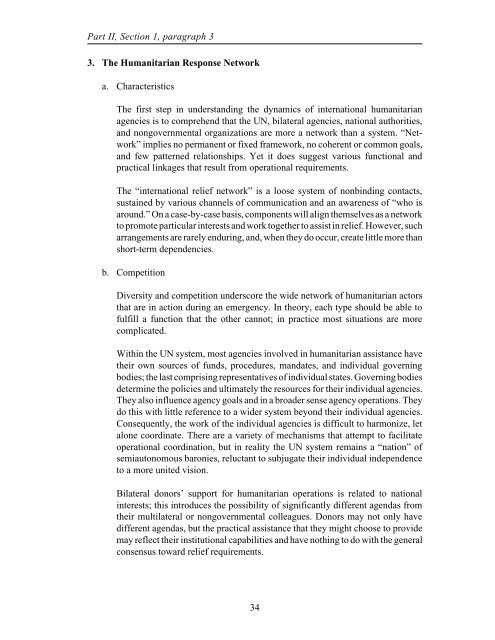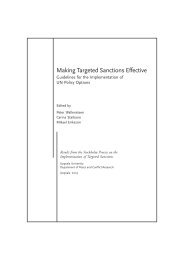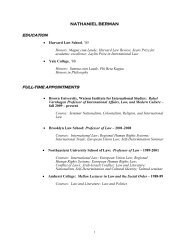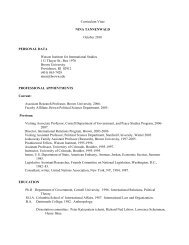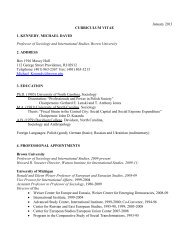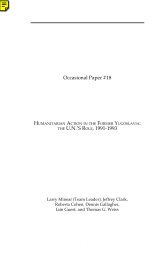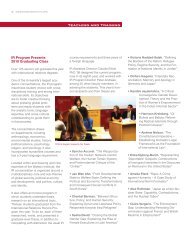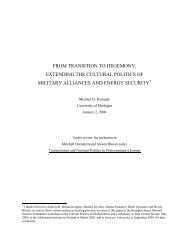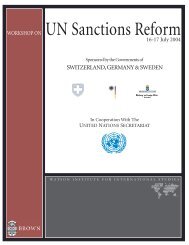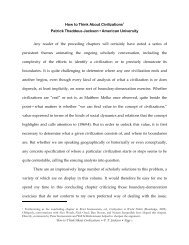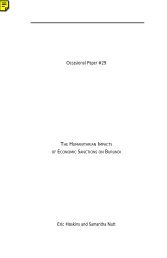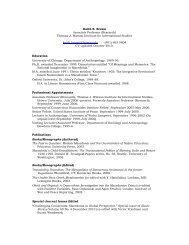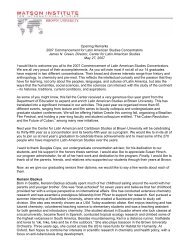a guide to peace support operations - The Watson Institute for ...
a guide to peace support operations - The Watson Institute for ...
a guide to peace support operations - The Watson Institute for ...
You also want an ePaper? Increase the reach of your titles
YUMPU automatically turns print PDFs into web optimized ePapers that Google loves.
Part II, Section 1, paragraph 3<br />
3. <strong>The</strong> Humanitarian Response Network<br />
a. Characteristics<br />
<strong>The</strong> first step in understanding the dynamics of international humanitarian<br />
agencies is <strong>to</strong> comprehend that the UN, bilateral agencies, national authorities,<br />
and nongovernmental organizations are more a network than a system. “Network”<br />
implies no permanent or fixed framework, no coherent or common goals,<br />
and few patterned relationships. Yet it does suggest various functional and<br />
practical linkages that result from operational requirements.<br />
<strong>The</strong> “international relief network” is a loose system of nonbinding contacts,<br />
sustained by various channels of communication and an awareness of “who is<br />
around.” On a case-by-case basis, components will align themselves as a network<br />
<strong>to</strong> promote particular interests and work <strong>to</strong>gether <strong>to</strong> assist in relief. However, such<br />
arrangements are rarely enduring, and, when they do occur, create little more than<br />
short-term dependencies.<br />
b. Competition<br />
Diversity and competition underscore the wide network of humanitarian ac<strong>to</strong>rs<br />
that are in action during an emergency. In theory, each type should be able <strong>to</strong><br />
fulfill a function that the other cannot; in practice most situations are more<br />
complicated.<br />
Within the UN system, most agencies involved in humanitarian assistance have<br />
their own sources of funds, procedures, mandates, and individual governing<br />
bodies; the last comprising representatives of individual states. Governing bodies<br />
determine the policies and ultimately the resources <strong>for</strong> their individual agencies.<br />
<strong>The</strong>y also influence agency goals and in a broader sense agency <strong>operations</strong>. <strong>The</strong>y<br />
do this with little reference <strong>to</strong> a wider system beyond their individual agencies.<br />
Consequently, the work of the individual agencies is difficult <strong>to</strong> harmonize, let<br />
alone coordinate. <strong>The</strong>re are a variety of mechanisms that attempt <strong>to</strong> facilitate<br />
operational coordination, but in reality the UN system remains a “nation” of<br />
semiau<strong>to</strong>nomous baronies, reluctant <strong>to</strong> subjugate their individual independence<br />
<strong>to</strong> a more united vision.<br />
Bilateral donors’ <strong>support</strong> <strong>for</strong> humanitarian <strong>operations</strong> is related <strong>to</strong> national<br />
interests; this introduces the possibility of significantly different agendas from<br />
their multilateral or nongovernmental colleagues. Donors may not only have<br />
different agendas, but the practical assistance that they might choose <strong>to</strong> provide<br />
may reflect their institutional capabilities and have nothing <strong>to</strong> do with the general<br />
consensus <strong>to</strong>ward relief requirements.<br />
34


